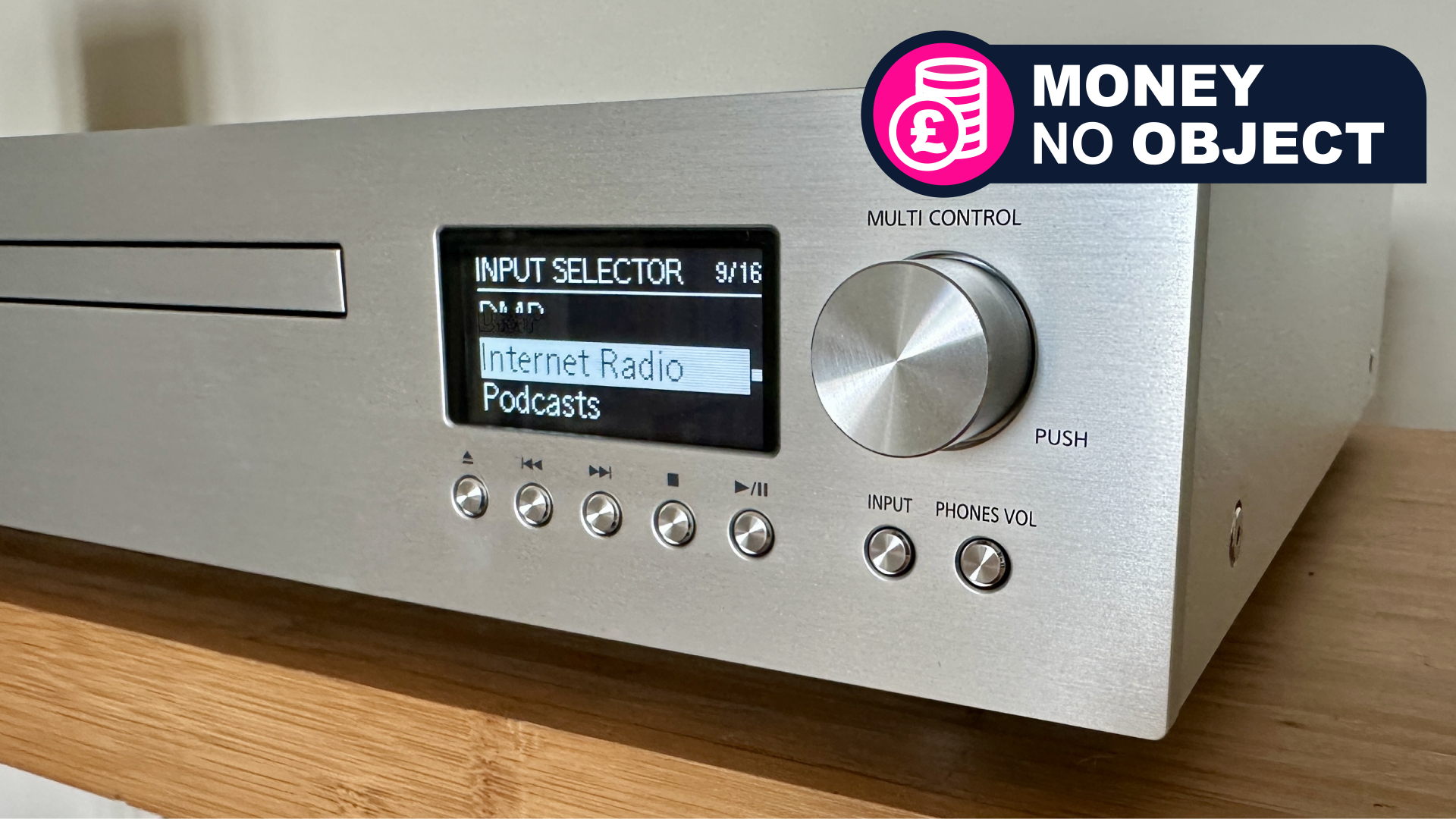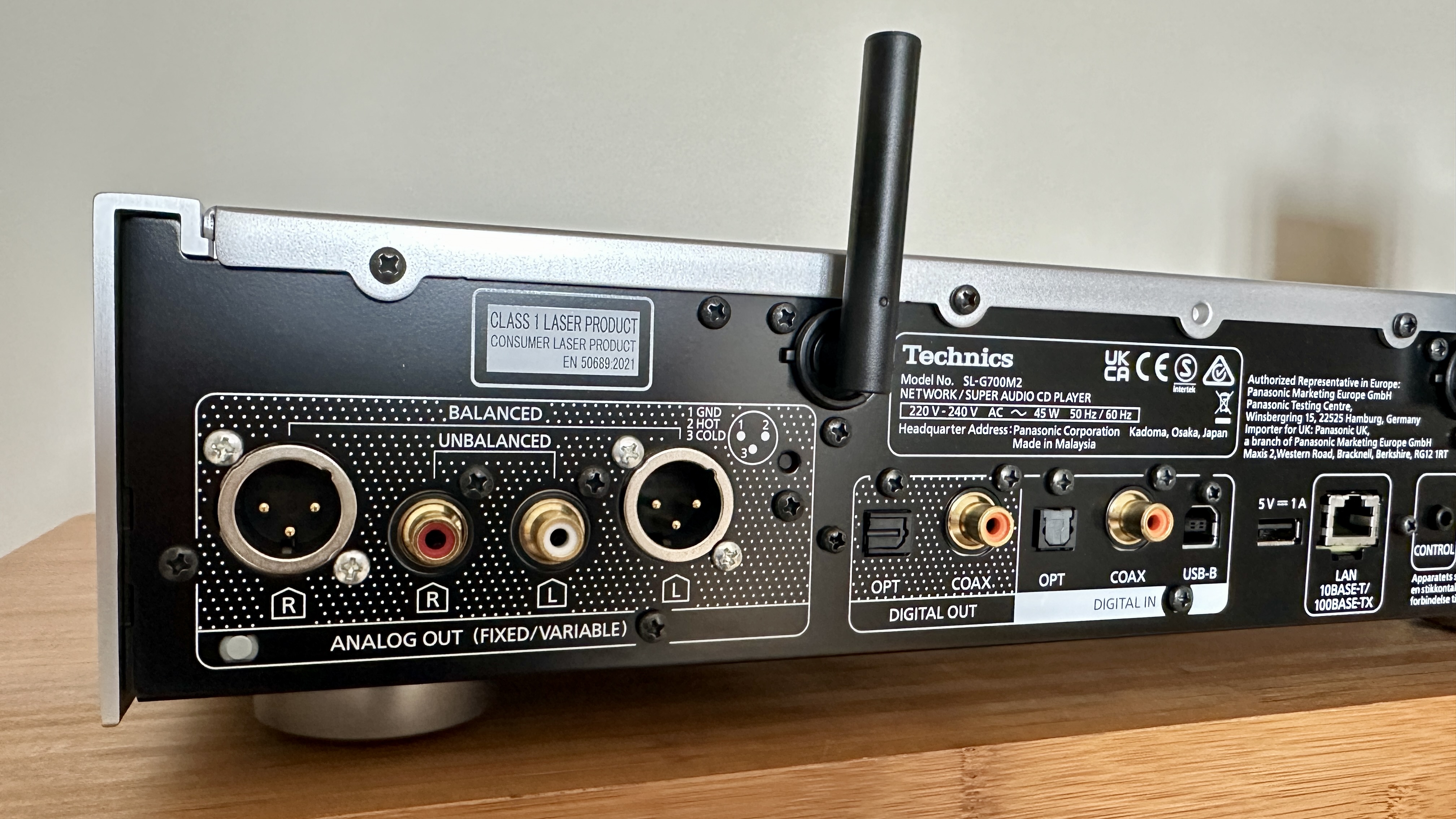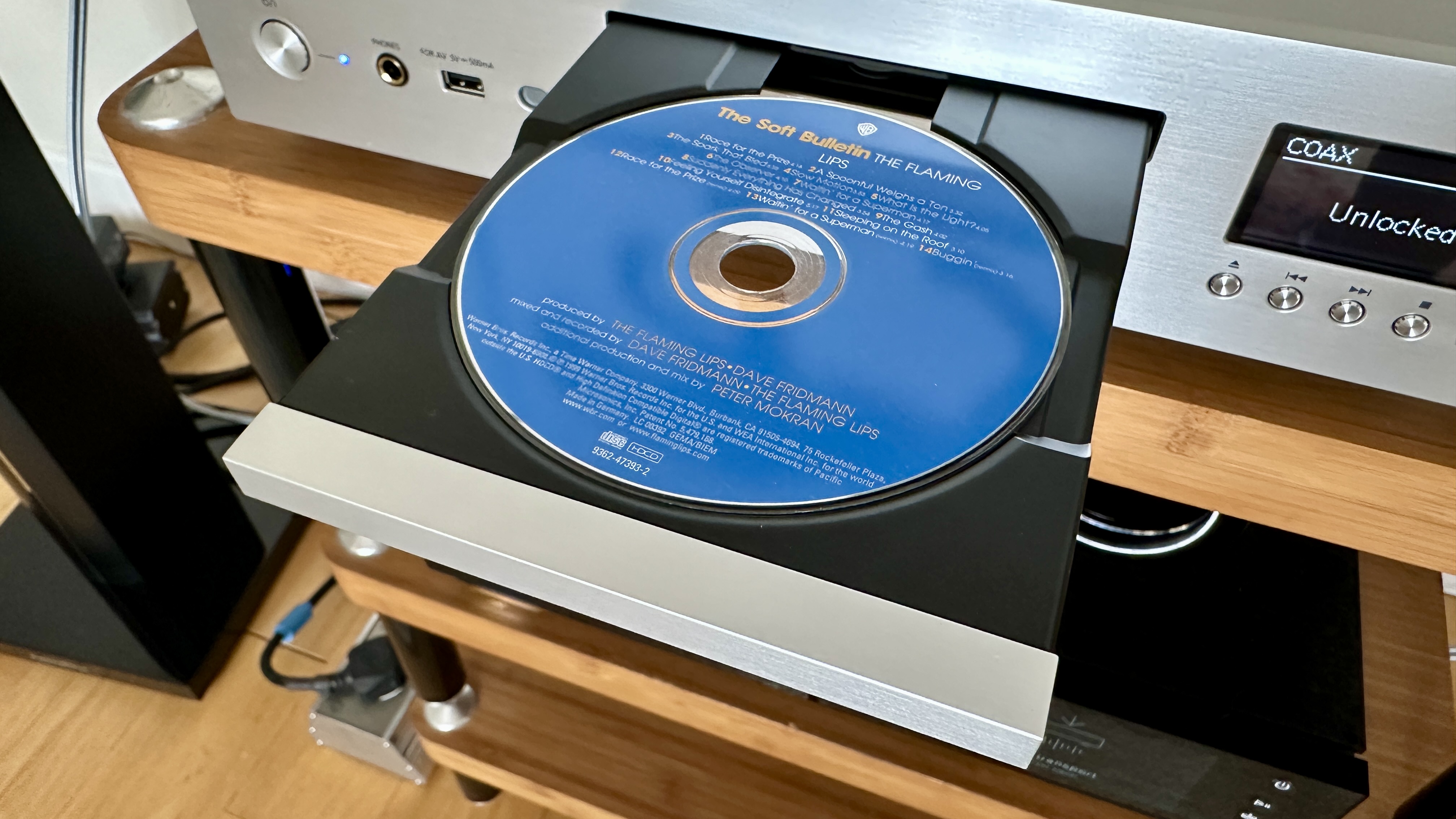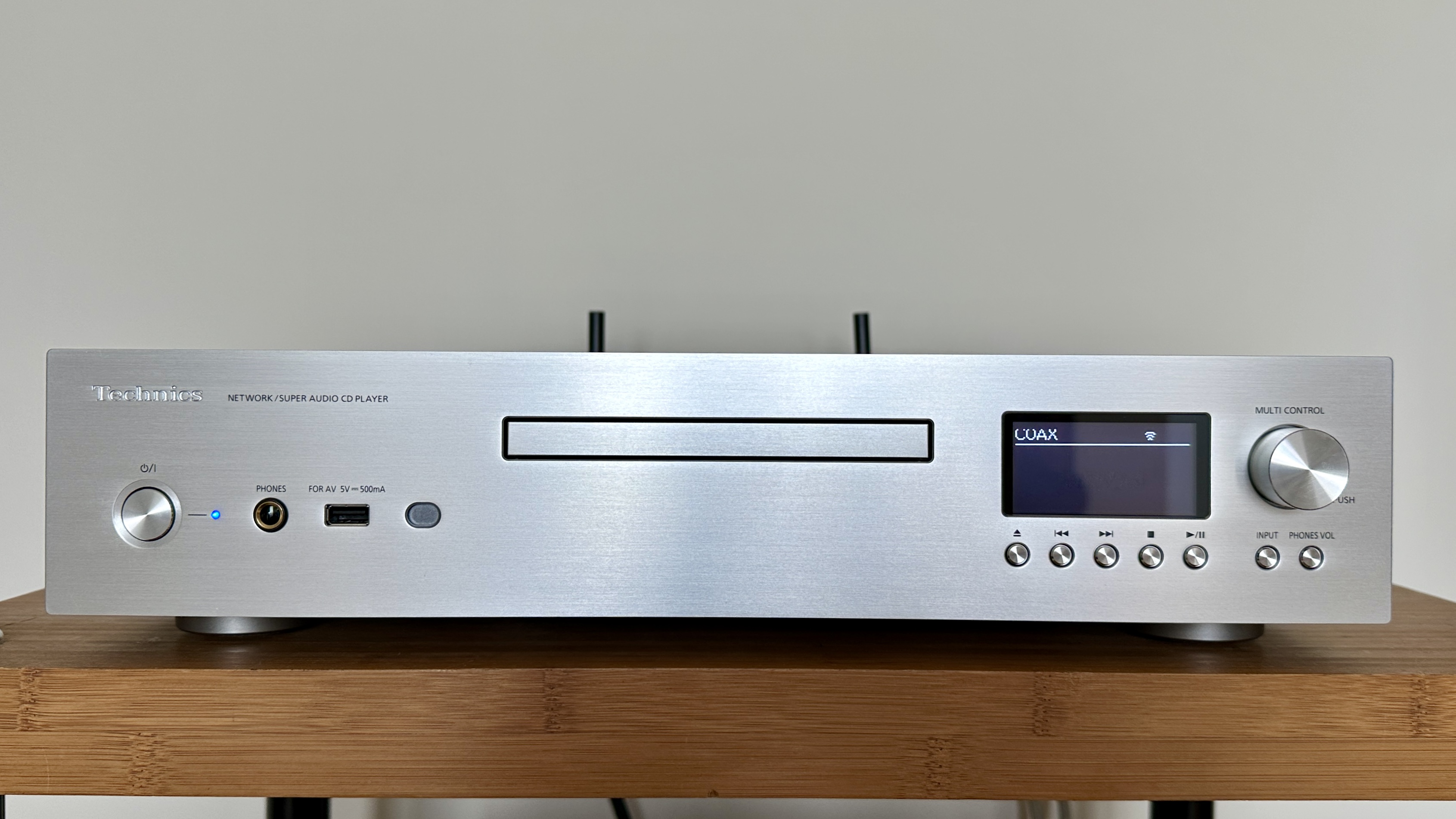Technics SL-G700M2: a high-achieving network streamer that's also a high-end CD player
The past an present can get along just fine, thank you

We love to give practical buying advice on the latest gadgets here at TechRadar. But sometimes what we love even more is to indulge in the most ridiculous, high-end, cutting-edge, luxurious tech on the planet. That's what we bring you in these Money no Object columns – you can read the whole series here.
You’ve got an audio system you’re very pleased with, because it sounds great and it looks the part. But it’s of a certain vintage, and you’d like to get into a bit of digital audio streaming because, well, the more sources of music the merrier, right? So what can you do?
The obvious thing is to make sure you’ve got a spare analogue input on your amplifier and then start researching the best music streamers around. There are some pretty tasty devices out there, after all – techradar.com itself is a big admirer of Cambridge’s Audio’s new CXN100 streamer, but it’s far from your only option.
But we all know what happens when you start investigating new equipment. Sometimes the budget you’ve set yourself goes out the window. Sometimes a new ‘this’ makes you think you really need a new ‘that’, and maybe you should think about upgrading ‘the other’ while you’re at it. Before you know it you’ve overhauled your entire system and there’s smoke coming off your credit card.
Technics has what could conceivably be described as ‘a solution’. The beautiful, beautifully built SL-G700M2 is ‘a solution’, all right – if that means combining high-resolution digital audio streaming capabilities, a fistful of wired and wireless inputs, and an optical disc-drive capable of dealing with super audio compact discs (as well as the more humble CD) into a single box, anyway.

Technics SL-G700M2: what is it?
According to Technics, the SL-G700M2 is a ‘network/super audio CD player’. What this means, in practice, is that it’s ‘a bit of everything’.
As far as physical media is concerned, there’s that optical disc drive front and centre of the fascia. From high-resolution super audio compact discs (or SACDs; they were a thing once, honestly) and MQA-CD to HDCD, CD-RW and common-or-garden CDs, the Technics is ready and able to deal with your legacy disc collection no matter how esoteric the specific format. This certainly separates it from the Hegel Viking we covered in these regular Money No Object slots recently – a $5,000 / £4,500 (around AU$7,925) disc player that does just one job: play CDs. That's correct, the Hegel Viking is a high-end CD player that won’t play SACDs or DVD-Audio discs and has no built-in streaming capability.
Back to the Technics and there’s a USB-A slot on the fascia too, just next to the 6.3mm headphone socket, and a USB-B input on the rear of the machine – so thumb-drives and connection to a laptop or what-have-you are available.
Get daily insight, inspiration and deals in your inbox
Sign up for breaking news, reviews, opinion, top tech deals, and more.
The rear panel also has digital optical and digital coaxial inputs, in case you have external equipment you wish to route through in order to take advantage of the SL-G700M2’s ‘coherent processing’ -assisted digital-to-analogue conversion circuitry. There’s an Ethernet socket too, for optimal network stability.
As far as outputs are concerned, in addition to that headphone socket there is a pair of unbalanced stereo RCA outputs and a pair of balanced XLRs. So connection to pretty much any worthwhile amplifier is assured.
The rear panel also hosts a couple of short aerials, because naturally enough the Technics has wireless connectivity available too. Dual-band wi-fi allows for network connection, Apple AirPlay 2, Chromecast, and Spotify Connect – all other worthwhile music streaming services are available, of course, via their native apps. Internet radio is on board, and if push comes to shove you can also use Bluetooth – although it’s ‘just’ 4.2 and ‘only’ compatible with SBC and AAC codecs.
On the inside, Technics has deployed the same power-supply arrangement, that splits dedicated feeds to the analogue and digital sections, that first saw service in its super-pricey ‘Reference Class’ range of products. It’s designed to reduce noise on the supply feed, particularly on the analogue side.
And there’s also that ‘coherent processing’ technology, of course. The player’s ESS ES9026PRO DAC chipset is bolstered by an additional stage in the digital signal path that attempts to negate the artefacts such as changes in gain or phase that are the inevitable result of digital filtering. The system is switchable in the control app, so you can decide for yourself if you think it’s worth deploying or not.
The player can be control by using the remote control handset that accompanies it, or the ‘AUdio Center’ control app. The remote is on the big side, but at least that means it doesn’t have any undersized buttons – and it covers pretty much every eventuality. The app is rather underwhelming, though; it’s not very thorough, nothing special to look at, and it can’t even set the device up in the first place. You have to use Google Home to get up and running – but that does at least mean the SL-G700M2 works with Google Assistant.

Technics SL-G700M2: what makes it special?
Aside from the obvious – the breadth of its functionality – there are a couple of things that make the Technics special. There’s the way it sounds, and the way it’s built.
Taking the second of those things first, there’s just no arguing with the way the SL-G700M2 is built or finished, or with the materials it’s built from. In every area, this looks and feels like a premium device. The aluminium side-panels are 3mm thick, and the fascia is a full 7mm thick – which allows the ‘Technics’ logo to be engraved on its top left, which is a seriously classy touch. The disc-tray is made of die-cut aluminium too, and slides with the sort of well-damped precision that encourages you to open and close it even if you don’t want to load a disc. The fascia controls all feel good and operate with real positivity, especially the ‘turn/push’ multi-control dial. Everything is put together flawlessly. Only the rather rudimentary monochrome display undermines the luxurious impression.
Most of all, though, the Technics SL-G700M2 sounds an absolute treat – and that’s the case no matter how you get digital audio information into it or, to a slightly lesser extent, the size and quality of the digital audio content you use.
Obviously, some properly hi-res stuff is what the Technics likes most of all – and given that its DAC is capable of dealing with all popular file types of up to 32bit/384kHz and DSD256, properly hi-res stuff can certainly be dealt with. And if you pander to it to this extent, the SL-G700M2 is an intermittently thrilling listen.
It’s no lapel-grabber, the Technics, and isn’t about to try and make every recording the most exciting thing you ever heard. It’s altogether more judicious and considered than that, preferring to get out of the way of the music as much as possible. Yes, it digs deep into the frequency range and punches with proper determination where bass information is concerned - but it’s not overblown or showy. If there’s detail there relating to tone, texture or harmonic variation, it will report on it – but it’s not going to make a song and dance about doing so.
It communicates with real eloquence through the midrange, and can organise and control a soundstage so effectively that any vocalist occupying the middle of the frequency range gets plenty of space in which to express themselves. High-frequency information is served up with real positivity, and the SL-G700M2 has plenty of substance to go along with its top-end drive and attack. The frequency range hangs together neatly, and the stage is wide and deep enough for even very complex recordings to be laid out horizontally rather than the information be piled up vertically. It’s an easy-to-follow device, and is tonally balanced and naturalistic too.
Dynamic headroom is considerable, so changes in intensity or simple volume are tracked fully. Rhythmic expression is very decent too, so recordings never get bogged down or tripped up by their own low-frequency response. And there’s a definite sense of ‘musicality’ to the way the Technics operates overall – which is not something that can be said for every source of digital music, no matter how much it costs.

Technics SL-G700M2: is it worth it?
Context, of course, is everything. At £2899 (so, somewhere in the region of $3,650 or AU$5,599), the Technics SL-G700M2 is no one’s idea of a bargain, even if it does have fair bit more functionality than the majority of digital music streamers. So it’s important that it’s integrated into a system of similarly accomplished partners that’s something like proportionate where value/cost is concerned.
As long as it’s working with appropriately talented amplification and loudspeakers, though, there’s not much else to concern yourself with. As with every piece of audio electronics, a degree of system-matching is in order – in this instance, I’d suggest the SL-G700M2 won’t thank you for incorporating it in a set-up that’s already lively where the top of the frequency range is concerned. The Technics is assertive enough when it comes to treble response, and similar top-end confidence in the rest of the system could well end up in too much of a good thing.
Other than that, though, there are very few downsides to Technics SL-G700M2 ownership. Unless youre expecting a state-of-the-art control app, that is…
You may also like
Simon Lucas is a senior editorial professional with deep experience of print/digital publishing and the consumer electronics landscape. Based in Brighton, Simon worked at TechRadar's sister site What HiFi? for a number of years, as both a features editor and a digital editor, before embarking on a career in freelance consultancy, content creation, and journalism for some of the biggest brands and publications in the world.
With enormous expertise in all things home entertainment, Simon reviews everything from turntables to soundbars for TechRadar, and also likes to dip his toes into longform features and buying guides. His bylines include GQ, The Guardian, Hi-Fi+, Metro, The Observer, Pocket Lint, Shortlist, Stuff T3, Tom's Guide, Trusted Reviews, and more.
